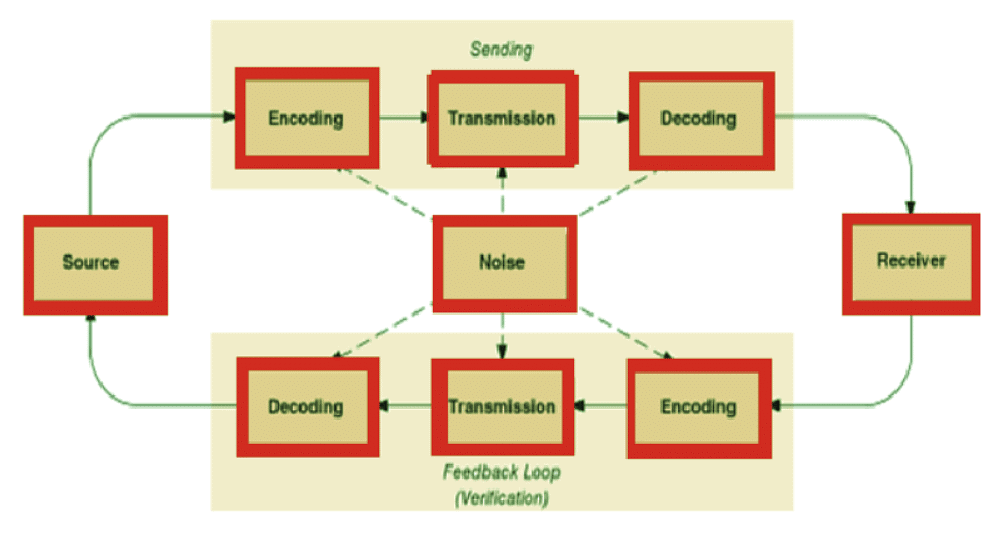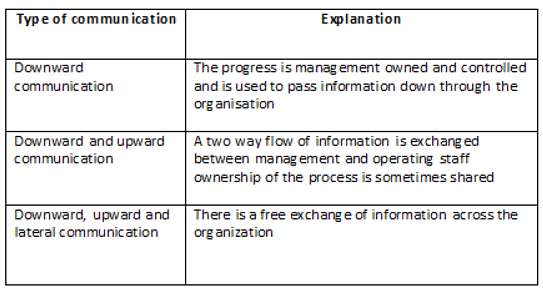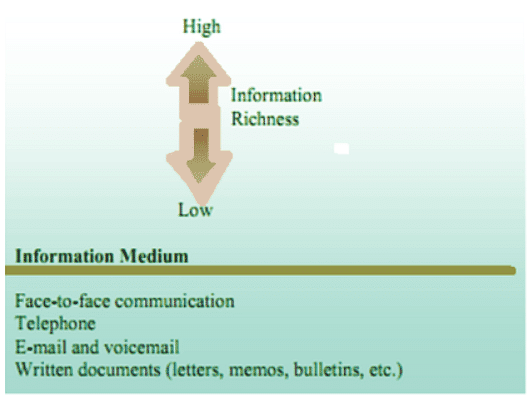Dynamics of Organizational Behavior: Communication | NABARD Grade A & Grade B Preparation - Bank Exams PDF Download
Organizational Behaviour in Business
- Significance in Organizations: Organizational behaviour plays a crucial role in the business processes of organizations.
- Understanding and Predicting: Scrutinizing the elements of organizational behaviour helps in better understanding, predicting, and controlling behaviour within the organization.
- Key to Organizational Achievement: Effective communication is identified as the key to overall organizational success.
- Definition of Communication: Communication is the process of conveying messages from one person to another.
- Importance of Understanding: Vital that the recipient comprehends both the content and meaning of the conveyed message.
- Function of Communication: Weihrich and Koontz emphasize that communication in organizations serves the purpose of uniting employees to achieve mutual goals.
Effective Communication in Organizations
- Necessity for Goal Setting: Effective communication is necessary for setting goals and developing plans for their realization in organizations.
- Resource Management: It plays a vital role in managing human and other resources in the most successful and appropriate manner.
- Member Selection, Progress, and Evaluation: Communication is crucial for selecting, progressing, and evaluating the performance of organization members.
- Management Guidance and Motivation: It contributes to the management, guiding, motivating, and creating a positive climate where people willingly contribute.
- Control Over Realization: Communication provides control over the realization of organizational plans and objectives.
- Complex System of Information Flow: According to Fox (2001), organizational communication is a complex system involving the flow of information, orders, wishes, and references within formal and informal communication networks.
- Functional and Operational Definition: Tomasi and Medeiros (2007) define communication functionally and operationally as a common process involving sender, receiver, channel flow, and level in corporate relationships.
- Symbolic Interaction Perspective: Casali (2006) suggests a theoretical perspective known as symbolic interaction, viewing communication as a social process influencing both objective and subjective aspects, creating a stable yet evolving organizational atmosphere.
Communication Process Elements
- Sender: The source of the communication, initiating the process by conveying a message.
- Message: The information or content intended to be communicated from the sender to the recipient.
- Medium: The method or channel through which the sender transmits the message to the recipient.
- Recipient: The individual or group receiving the message, responsible for interpreting and understanding it.
- Flow of Communication: Communication originates from the sender and moves through the medium to reach the recipient.
- Medium Variability: Different mediums are employed in organizational communication, such as immediate conversations, memos, printouts, and schemes, depending on the message's content and purpose.
- Understanding by the Recipient: The recipient endeavors to comprehend the message conveyed by the sender.
- Communication Interruptions: Noise in the communication channel can sometimes disrupt the communication process.
- Information Overload: In organizational communication, information overload may occur, causing a burden. Therefore, it is crucial to select only relevant information.
Loops between source and receiver in communication process:

- Common Understanding: Achieved when all involved parties agree not only on the information but also its meaning.
- Alignment of Messages: Effective communication occurs when the sender's intended message aligns with the interpretation by the receiver.
- Professional Communication: The most proficient communication achieves its goal with minimal resource expenditure, particularly in terms of time.
- Resource: Time is a crucial resource in communication, and efficiency does not always equate to effectiveness.
- Cost-Effective Communication: While low-cost methods like mass emails may save time, they might not ensure a uniform understanding without opportunities for clarification.
- Obstacles to Communication: Various hindrances include noise, physical distractions, language issues, and the failure to recognize nonverbal signals.
- Clarification Opportunities: Interactions that allow questions and clarification are essential to prevent incorrect interpretations.
Communicational flow in the organisation can develop into many different directions
- Upward Communication:
- Information flows from lower levels to higher levels in the official hierarchy.
- Used for conveying proposals, employee opinions, work insights, attitudes, and problems.
- Ensures freedom of communication, but the drawback is the potential for message filtering.
- Downward Communication:
- Communication moves from higher levels to lower levels in the organizational structure.
- Primarily used for giving orders, sharing ideas, and providing information.
- Time-consuming, with a common issue being the loss or denial of information in the chain of command.
- May lead to misinterpretation, necessitating a feedback loop for confirmation.
- Sideward Communication:
- Encompasses both horizontal and diagonal flow of information.
- Involves communication between individuals at the same hierarchical level or across different levels.
- Referred to as "sideward communication" due to its shared characteristics in both directions.
Sideward Communication
Three-way communication that is downward, upward, and lateral are a characteristic of project organizations in which people are motivated to cross barriers to get the information they need to do the job.
Types of Communication

Communication can develop into several different forms such as oral, written and nonverbal form.
- Oral communication: In this type of communication, the spoken word is the main code of the communication. Formal discussions and informal rumours are some of the forms of oral communication. Usual channels of oral communication are phone, video, and face-to-face conversations. There are some benefits of oral communication over other forms of communication, such as the speed of conveying the information and feedback. The drawback is the possibility of distorting the original message. In the business world, oral communication has vital role for successful operation.
- Written communication: When comparing with the oral communication it is concrete whereby it is much easier to confirm the data. Major disadvantage is that it takes up more time compared to the oral communication and there is not a direct feedback. The written form of the communication is attached to some sort of technology which enables people to transmit the information such as PC, paper, pen.
- Nonverbal communication: non-verbal communication includes facial expression, gesturing, tone of the voice, look and appearance. Non-verbal communication includes all intentional and accidental information which have no form of written or spoken word (Rouse and Rouse, 2005). There are four elements of nonverbal communication that, in the workplace, can be seen as the most important to understand.
- Eye Contact: Looking a person in the eyes while they are talking is often considered the ultimate form of respect. Eye contact, or lack thereof, is the first telltale sign of whether you think a person is worthy of your attention. By looking someone in the eyes, you are telling them that what they are saying is important and understood.
- Body language: How many of us have ever held a meeting to find the other team members slouching in their chairs with their arms folded? This communicates that the recipients are uninterested and may not be paying attention - even if that is untrue. The folding of arms says that you are not open to what others have to say, and slouching says that you are bored or discouraged.
- Tone: This is communicating with your voice when not using words. Through pitch, volume, and inflection, tone of voice provides powerful clues into your true feelings. For example, tone of voice is a quick indicator of sarcasm, confidence, frustration or agreement.
- Time: Respecting the time of co-workers could be the most important aspect of nonverbal communication in the workplace. The way a person treats time can show how organized they are or how they regard others.
Forms of Organizational Communication
- Formal Communication:
- Official and sanctioned by the organization.
- Can move upward, downward, or horizontally.
- Often predetermined and necessary for specific tasks.
- Informal Communication:
- Unofficial and more casual.
- Involves gossip, complaints, personal discussions, and team interactions.
- Provides insights into the informal aspects of the workplace.
- Information Richness:
- Refers to the depth of understanding conveyed by a single piece of information.
- Communication is considered information-rich when it significantly enhances understanding.
- Communication Media:
- Varied channels for transmitting information.
- Information richness influenced by factors like the number of channels and feedback opportunities.
- Determines the effectiveness and depth of communication in the organization.
The Relationship between Information Medium and Information Richness

Characteristics of Communication Channels
- Face-to-Face Communication:
- Rich Information: Uses words, facial gestures, and body language for a comprehensive message.
- Instant Feedback: Provides immediate opportunities for response and clarification.
- Written Communication:
- Lower Information Richness: Lacks multiple channels, reducing depth of conveyed meaning.
- Slower Feedback: Responses are delayed compared to face-to-face interactions.
Communication Planning Phases
- Assessment of Needs:
- Understanding Requirements: Identify communication needs and challenges.
- Project Community Cooperation: Lay the groundwork for future collaboration.
- Formulate Plan:
- Strategic Planning: Devise a plan addressing identified communication needs.
- Resource Allocation: Allocate time and resources effectively.
- Implementation Plan:
- Executing Strategies: Put the communication plan into action.
- Team Collaboration: Work together to ensure effective communication.
- Feedback:
- Evaluate Effectiveness: Assess how well the plan met objectives.
- Continuous Improvement: Use feedback to refine and improve future communication strategies.
Communication Planning Challenges
- Human Tendency to Judge:
- Obstruction to Interpersonal Communication: People tend to evaluate and judge statements from others.
- Impact on Understanding: Listeners may not genuinely listen but form their own opinions.
- Roger's Solution:
- Listener's Responsiveness: Suggested listeners respond only after fully understanding the speaker's ideas and feelings.
- Feedback Process: Applies to both listening and providing feedback.
- Consequences of Communication Barriers:
- Directive Failures: Barriers lead to employees failing to fulfill given directives.
- Misinterpreted Messages: Communication obstacles result in misunderstandings, affecting businesses of all sizes.
- Organizational Impact:
- Smooth Communication Importance: Emphasizes the critical role of smooth communication processes.
- Negative Consequences: Highlights dangerous outcomes if communication faces hurdles in organizations.
Communication in Organizations: Key Functions
- Essential for Management Functions:
- Planning, Organizing, Leading, Controlling: Effective communication is crucial for managers to perform key functions in organizations.
- Role in Planning:
- Information Exchange: Managers need clear communication to exchange essential information for effective planning.
- Organizing and Task Allocation:
- Job Task Communication: Organizing involves communicating job tasks clearly to ensure effective coordination.
- Leadership and Team Goals:
- Leader-Subordinate Communication: Leaders must communicate effectively with team members to achieve common goals.
- Control and Monitoring:
- Written and Oral Communication: Controlling tasks requires both written and oral communication for effective supervision.
- Managerial Time Allocation:
- Time Spent on Communication: Managers devote significant time to communication with superiors, subordinates, colleagues, and external stakeholders.
- Communication Channels:
- Face-to-Face, Telephonic, Written: Utilization of various communication channels, including face-to-face, telephonic, and written methods.
- Foundation of Motivation:
- Performance Insight: Communication provides insights into job performance, aiding in motivation and improvement.
- Source of Information:
- Decision Making Support: Serves as a vital source of information, supporting decision-making processes.
- Attitude Development:
- Informed vs. Less Informed: Different communication forms like magazines and meetings contribute to attitude development among employees.
Importance of Communication in Organizations
- Definition of Communication:
- Exchange of Information: Communication is the exchange of information between two individuals.
- Vital Role in Organizations:
- Integral to Organizational Functioning: Communication holds a crucial role in the effective functioning of any organization.
- Purpose of Communication:
- Coordination, Information Sharing, Expression: Communication aims to achieve coordinated actions, share information, and express thoughts and feelings.
- Communication Methods:
- Oral, Written, Nonverbal: People in organizations communicate using oral, written, and nonverbal methods.
- Managerial Responsibility:
- Information Flow Oversight: Managers in organizations, actively engaged in communication, bear responsibility for overseeing the flow of information among individuals.
- Responsibility in Information Flow:
- Managerial Role in Communication: Managers play a key role in ensuring effective communication within the organization.
Conclusion
Communication is a fundamental process facilitating the exchange of information between individuals. Its pivotal role is evident in the effective functioning of any organization. The primary objectives of communication include achieving coordinated actions, sharing information, and expressing thoughts and feelings. Within organizational settings, communication takes various forms such as oral, written, and nonverbal methods. Managers within the organization, actively engaged in communication, bear the responsibility of overseeing the flow of information among individuals. In essence, communication is a critical aspect that ensures the smooth operation and coordination within an organization.
|
847 videos|1297 docs|420 tests
|
FAQs on Dynamics of Organizational Behavior: Communication - NABARD Grade A & Grade B Preparation - Bank Exams
| 1. What is organizational behaviour in business? |  |
| 2. How does effective communication contribute to organizational success? |  |
| 3. What are the key elements of the communication process? |  |
| 4. What is sideward communication in organizations? |  |
| 5. How does the choice of information medium impact information richness in communication? |  |





















